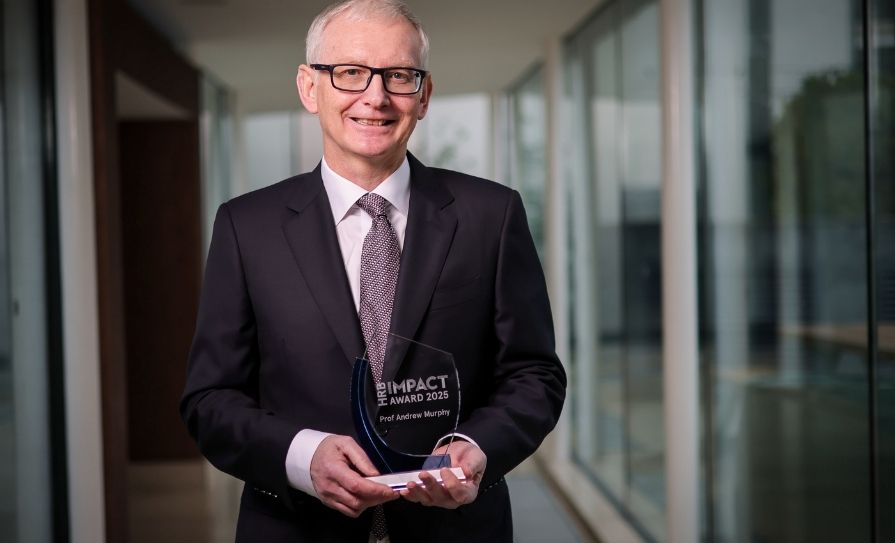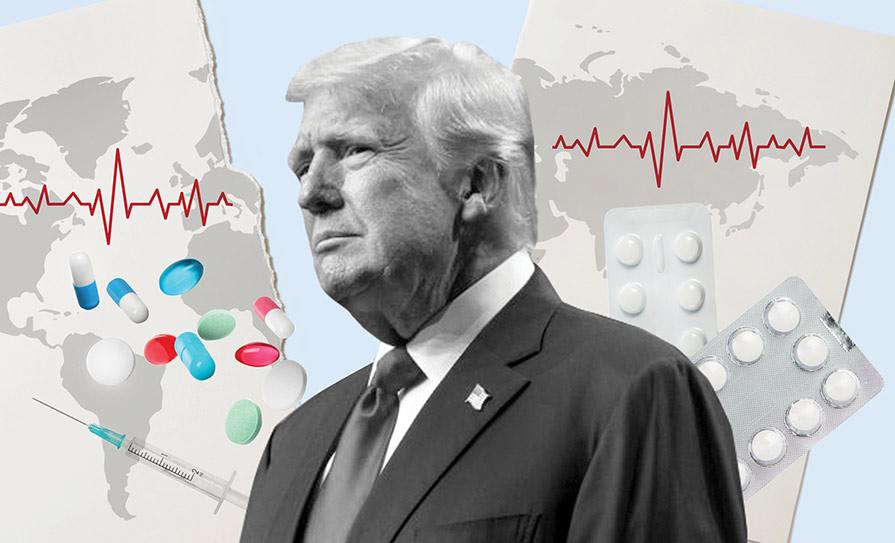The structured care programme for treating patients with chronic disease in the community is helping to keep thousands of people out of hospital. Niamh Cahill speaks to some of the GPs involved in making the programme a success
The need to tackle the rising burden of chronic diseases is a challenge facing countries globally.
Chronic diseases, such as diabetes and heart disease, are the most common causes of death throughout Europe, including Ireland, a 2022 report from University College Cork found.
The report Chronic Disease Burden in Ireland from the School of Public Health warned: “The rise in chronic disease is increasing demand on health systems worldwide and is extremely costly for governments… there is a widening gap between available resources and healthcare costs. The costs will continue to increase unless governments can find a better way to prevent and treat these diseases.”
It is because of these factors that the structured chronic disease management (CDM) programme in general practice launched on a phased basis in 2020. The CDM programme was a key development arising from the GP agreement between the IMO and health management in 2019.
It encompasses adults with medical/doctor visit cards who are at risk of and already living with heart disease, chronic obstructive pulmonary disease (COPD), asthma, and type 2 diabetes.
Last month, the HSE published the second report on the implementation of the programme, which showed 186,210 patients were treated by GPs in the first two years since its establishment.
For context, it should be noted that, to date, the CDM programme has mainly operated during a global pandemic.
Despite this challenge, GPs feel the CDM programme is demonstrating the immense contribution general practice can make in managing chronic diseases in the community. It also shows the benefits of a long overdue, progressive shift towards structured and sufficiently resourced GP care.
Radical
According to Dr Shane McKeogh, ICGP/HSE Clinical Lead Respiratory in Integrated Care, the plan is one of the most radical interventions in general practice for decades.
“This is one of the biggest initiatives I have seen in general practice since I started working as a GP 18 years ago,” he told the Medical Independent (MI).
Dr McKeogh is one of four GP Clinical Leads working with the programme. They provide advice and education on their particular disease area to GPs, practice nurse teams, and the HSE.
As ICGP/HSE Clinical Lead, Dr Joe Gallagher has responsibility for heart failure and cardiovascular disease.
Dr David McConaghy, ICGP/HSE Clinical Lead for the Prevention of Cardiovascular Disease, told MI his role has “an emphasis on lipids and hypertension”.
According to Dr Suzanne Kelly, Cork GP and ICGP/HSE Clinical Lead for Diabetes in Integrated Care, all four leads influence guidelines and help foster understanding of pathways of care for patients with chronic disease.
Dr Kelly said the CDM programme allows GPs to keep well people out of hospital outpatient departments, where extremely long waiting lists can act as a barrier to effective care.
“Our contract [GMS GP contract] is very old,” she told MI. “We were only empowered to see people who wake up in the morning and feel sick and once a diagnosis is made their care is supposed to be taken over by the hospitals. Clearly, everything has changed. This represents a complete reorganisation of how chronic disease is managed.”
The programme, which is rolling out on a staged basis, has yet to reach its full potential as 2023 will mark the first year of its complete establishment in the community.
Dr McConaghy explained that when the programme launched initially it “was very much a secondary prevention programme”.
“You had an established disease that was being treated and managed to prevent more complications. Now, last year and this year, opportunistic case finding has been introduced,” he said.
“It’s a primary prevention strategy. So, if you have a medical or doctor visit card and you’re over 45 years of age and you meet set criteria, where it’s felt you could be at high risk of cardiovascular disease, for example, you get an examination and investigations done. After this, it may be discovered that you have a chronic disease and you enter the programme or you might be referred for review again in five years if you’re not considered to be at high risk. Or you may be seen to be at a high risk. In this case you enter a prevention programme where annual checks are performed.”
GPs nationally have largely embraced the programme with evidence showing that 91 per cent are participating. Dr McConaghy added that despite the pandemic, over 90 per cent of patients were seen face-to-face.
He said that with Ireland’s ageing and growing population, the management of chronic diseases in the community is vital to help alleviate pressure on the hospital system.
“If you can get your population’s blood pressure optimised you can prevent many complications such as stroke, heart attack, atrial fibrillation, congestive cardiac failure, and so forth,” he explained. “There are lots of benefits. With every year that goes by we are going to see better control.”
According to Dr McKeogh, the programme is a good example of the Sláintecare strategy being delivered in the community.
“There are different aspects to it, but chronic disease management is essentially empowering GPs to provide formalised structured reviews for patients,” said Dr McKeogh.
“Twice a year, they come in to see our nurses and GPs if they have one of the conditions. We actually sit down and put time aside to look at it. That’s a big change. Prior to that we would have been trying to fit it in when someone was coming in acutely unwell and we’re under pressure trying to deal with patient requests and needs. This is very different.”
Under the programme, patients typically see a practice nurse and undergo a series of tests and checks on their blood pressure, height, weight, vaccinations, smoking, and so forth, before returning to see their GP where the results are examined.
“It’s very empowering for the patients,” said Dr McKeogh.
“Broadly, in our practice, I would say patients are absolutely delighted. We are hearing it everywhere, both the GPs and practice nurses and patients are all delighted. Patients can come in twice a year to have conditions they are living with checked, and they are thrilled that it’s in the community. Delivering the right care in the right place at the right time. It’s working really well.”
Dr Orlaith O’Reilly, HSE National Clinical Advisor, Chronic Disease, said that as the programme is expanded “it will result in a reduction in hospital attendance by patients with these conditions”.
The latest programme report, Dr O’Reilly noted, “shows that only 9 per cent of patients were attending hospital for ongoing care of any of the conditions for which they were attending the GP under the CDM programme.”
Chronic disease ambulatory care hubs
The phrase “integrated care” has been discussed for many years. However, GPs now believe the words are being put into action with the launch of HSE chronic disease ambulatory care hubs.
The hubs are a critical aspect of the CDM programme and are specifically engineered to support its work. Some hubs are already in operation and more are due to open this year.
The hubs are equipped with community-based specialists in the specific disease areas covered, who act a conduit between general practice and hospitals. They comprise teams of consultants, nurses, allied healthcare specialists, and administrative staff.
“The rubber is hitting the road” as the hubs are finally being established, with one already in operation in Cork city, Dr Kelly remarked.
“I’m in Cork and we’ve a local one up and running in Gurranabraher,” she said.
“It’s absolutely amazing. The hubs are there to support primary care, they are not like outpatient departments. The idea is that, for example, if you have a patient with asthma who is using their inhalers, but is still getting exacerbations and you’re not sure what’s going on, instead of putting them on a three-year waiting list for respiratory COPD, you have a nurse specialist and consultant available in a local hub, who can do good testing on inhaler technique… then send the patient back to us. The patient doesn’t go for unlimited reviews. They get the expertise they need and get back on the right pathway and come back to their community.”
“It’s keeping all these people away from hospital and providing support because general practice can sometimes feel quite isolated,” said Dr Kelly.
“There are long waits and it can be difficult to contact staff in hospitals. These hubs were designed to support us with patient care, which I think is fantastic. They will help to keep slightly lower complexity care out of big tertiary hospitals.”
Typically, a patient will wait just one-to-two weeks for a referral. According to Dr Kelly, patients will return to their GP after being seen at a hub.
“In outpatients, patients are brought back every six-to-12 months, resulting in reduced capacity for the hospital clinics to take on new patients,” said Dr Kelly.
“We’re really hoping not to have people being brought back again and again to the hubs. It’s a touchpoint of care.”
Dr McConaghy added the system in operation in the hubs is “a more appropriate use of resources”.
Before Dr McKeogh started work under the programme, he admitted that he didn’t fully understand what the term “integrated care” meant in practice.
“But I’m seeing it now and seeing how important, and potentially transformational, this will be for healthcare across the country,” he said.
“The hubs are designed to deal with populations of 150,000. They’ve appointed huge numbers of staff in each of the disease areas. They have [a] similar set up in hubs as we have in general practice, so it works nicely.
“It’s de-siloing primary and secondary care. We find we are talking to our consultant colleagues in our disease areas and learning from each other and realising that everybody is working hard, and the learnings are really good. That’s at a national level and it will be replicated through each of the hubs.”
The programme allows GPs to provide the time and resources to help chronic disease patients in a much more proactive way than ever before, according to Dr Kelly.
“Instead of always firefighting people with pain, we’re making a great difference. It’s quite wholesome medicine.”
“These kinds of consultations are lovely. They are well structured and you get to have time to chat to the patients. It is a good news story. There is so much bad news in health.”
The report shows improvements in a number of areas, particularly smoking and physical activity. For example, of those who had inadequate physical activity on their first visit, 30 per cent had achieved adequate levels by their third visit.
Workload
The programme launched at a time when GP workloads were already onerous. Currently, there is additional concern about Government plans to expand eligibility for free GP care, which is due to commence this month. Has the CDM programme placed further pressure on general practice?
“I would say because it’s resourced work, it lets us plan our delivery,” argued Dr McKeogh.
“For example, we can take on extra nurse and doctor help. That wouldn’t have been the case previously with the capitation-based contract where the money was the same whether you saw someone once or a hundred times. This is different. Each time you bring someone in you get paid for it and you can plan for that and therefore make time for it.”
Dr McConaghy believes the income generated by the programme, particularly for an establishing GP, makes practice more sustainable.
“This is important. There is a global shortage of GPs and there’s nothing to stop a younger colleague leaving for Canada or Australia. It does generate work and takes time. There’s a lot of administrative work involved,” he said.
“But general practice when resourced and structured does have an ability to respond. You can see that. Covid vaccinations are an example: GPs gave 3.4 million Covid vaccines and we vaccinated the people who most needed to be vaccinated as well.”
As the work continues, Dr McKeogh is heartened by how much the programme is helping patients to live healthier lives with their conditions.
“This is helping hundreds of thousands of people. These are not small numbers. All of us probably know people that have these conditions and we will definitely know people that have been touched by this. The idea is that we will have helped people to live better with their disease and, therefore, there’s often knock-on improvements at a societal level in terms of less requirement to arrive unexpectedly at emergency departments, for example, because we’re targeting and capturing things earlier. Patients love it and doctors and teams love it.”
Structured care targets
The structured programme comprises three components: Chronic disease management (CDM); opportunistic case findings; and high-risk prevention. An eventual uptakeof 431,000 patients is expected.
- 253,500 patients will be seen under
the CDM programme with two GP visits and two practice nurse visits a year.
- 120,500 patients will come under the opportunistic case findings programme. This involves opportunistic assessments to detect and diagnose diseases at an early stage so that they can be appropriately managed.
- 57,000 patients will be seen by the high-risk preventative programme with
one GP visit and
one practice nurse visit a year.
Key takeaways from the Second Report of the Structured Chronic DiseasemManagement Programme in General Practice (January 2020-January 2022)
- 91 per cent of patients with chronic disease were not attending hospital for the ongoing management of their chronic condition, which was now fully managed routinely in primary care;
- 91 per cent of GPs are providing chronic disease management;
- 83 per cent of eligible patients (65 years and older) enrolled;
- Improving trend self-reported lifestyle risk factors – 13 per cent of patients had given up smoking between the first and third visit; of patients who were obese at their first visit, 1 per cent of these had achieved normal weight and a further 13 per cent had reduced weight and are now in the overweight category rather than obese.
HSE chronic disease ambulatory care hubs
- The HSE has established the hubs to support GPs in the provision of care to patients with heart disease, type 2 diabetes, COPD, and asthma.
- Guidance has been issued on how to correctly use and make referrals to the service.
- The cardiology integrated care team providing support for heart disease patients, for example, deliver services in the community, such as cardiac rehabilitation, echocardiography, and patient education.
- The hubs will help to ensure fewer patients are referred to hospital outpatient departments and hopefully help reduce the need for patients to attend emergency departments.
- A Healthlink referral system for GPs is being established for ease of referral to hubs.













Leave a Reply
You must be logged in to post a comment.